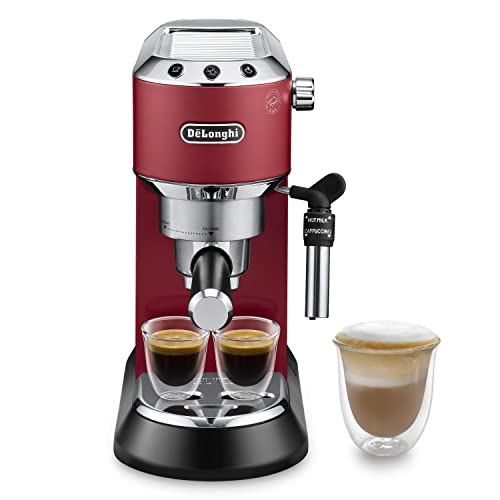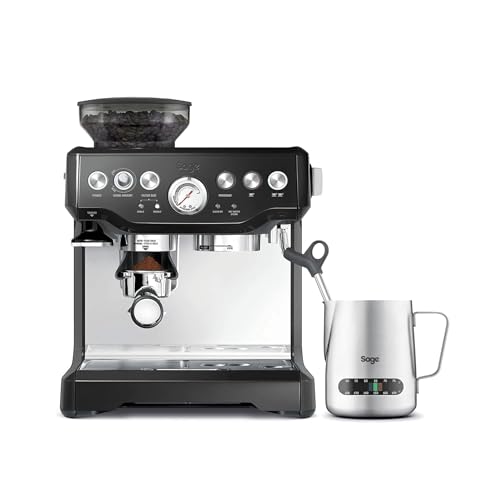
Coffeee
Add a review FollowOverview
-
Founded Date May 9, 2004
-
Sectors Banking
-
Posted Jobs 0
-
Viewed 264
Company Description
How To Solve Issues Related To Coffee Makers Uk
 Types of Coffee Makers
Types of Coffee Makers
You don’t really need an introduction to a great coffee machine if you are a coffee enthusiast. Whether you’re a hobbyist barista or just want to impress your friends with some exquisitely-poured coffee, there’s a machine for everyone. There are five primary kinds of coffee makers: French press, Pour over, Espresso, Filter and Pod.
French press
Try the French press if you’re looking to make your coffee drink with a more personal touch. It was invented in France in the 19th century, and its past makes it appear more sophisticated than an automatic machine. It also produces less waste than other methods of making coffee. It is a manual brewing device that uses a plunger in order to separate the grounds from the espresso that is brewed. It is also referred to as a cafetiere or caffettiera in Italy and Stempelkanne, Kaffeepresse, or Cafetiere in Germany.
Before you start brewing, ensure that the water is hot enough to be safe to pour into the French press. A kettle on the stove with an instant-read thermometer is very useful, as it will inform you precisely when the temperature is at the right.
When making French press coffee, it is important to select beans that are uniform and coarse. This will ensure that the coffee does not get over-brewed or under-brewed. Fresh coffee will have a greater flavor. If you do not have a grinder, you should consider purchasing one to get the most out of your coffee.
The Bonjour coffee maker looks amazing in any modern kitchen. This French press coffee maker is made from borosilicate glass that is taste neutral and heat-resistant. The coffee maker comes with a stainless-steel plunger and filter to guarantee a smooth and consistent cup. The coffee maker comes in various sizes which includes one that can make eight cups. This size is ideal for a household of coffee drinkers.
Pour over
The pour over is a specific coffee maker that makes cups of coffee by hand pouring hot water over ground beans in the form of a filter. This method of drip brewing is renowned for its superior control and lets you modify the outcome to your preferences. You can alter the temperature of the water that is brewed and the amount of coffee grounds to get more or less light a cup. You can also use different types of filters, which will affect the flavor of your coffee. The pour over can be an exercise to master however it can be rewarding once you’ve achieved the art of pouring.
Pour-overs are an excellent way to enjoy gourmet coffee at home. Pour overs are more delicate and complex, but they are worth the effort. This method of brewing is good for single origin coffees since it highlights their unique flavors and aromas. This is also a great choice for light roasts as it allows them to shine.
It’s important to know the differences between a pour-over machine and drip machine. Drip machines don’t allow for blooms, which could result in an under-extraction. This can result in a bitter and acidic taste in your coffee. Pour overs, on the other hand, can produce a nice bloom and are great to ensure even extraction.
There are a number of different pour over coffee makers on the market that include Melitta cones and Kalita Waves. You’ll need to play around with different filters to find one that works for you. Choose a flat-bottomed filtered filter to achieve the best results. This will help you avoid channeling.
Espresso
Espresso is a strong and full-flavored form of coffee that is served in small shots. It’s made by forcing hot water that is pressurised through finely ground 100% coffee beans through an espresso machine. The result is a dark, smoky liquid which is topped off by a layer of brown foam known as crema. The crema is created from the soluble oils in the coffee, and gives a rich flavor to the espresso. This concentrated form of coffee is the basis for a variety of coffee shop drinks, including cappuccino, latte and macchiato.
A coffee maker with espresso has three chambers. The bottom one houses the water and a filter-basket as well as a metal filter sit in the middle. The water is heated using an element of heating and then pumped through the grounds to the top chamber that houses the metal filters. The pressure pushes hot water through the ground and removes the essential oils. It’s important to grind the coffee finely and then pack it tightly into the filter prior to pressing. This maximizes the extraction of gas and oil for the best flavor.
Because the beans aren’t processed and filtered, espresso contains more natural nutrients than traditional drip brews – although too much of these can lead to high cholesterol. Espresso contains more caffeine than any other coffee drink, and studies have found that it improves mood, concentration and memory.
The most popular type of espresso maker is the stovetop model, which usually includes three or two chambers system. It is more expensive than other coffee makers but produces coffee of excellent quality. It also includes steaming wands so you can get creative with your latte. They’re typically small enough to be able to be tucked away on your kitchen counter and are ideal for those who like a quick cup of coffee in the car.
Filter
The filter is a crucial component of any coffee maker, and it works by separating the brewed coffee grounds from the water. This helps extract the flavors and oils from the coffee, making it taste better. The filter can also help stop the grounds from getting into the cup, causing bitter, sour taste.
The filter of a coffee maker is usually composed of paper, cloth or steel. Each of them has distinct advantages and disadvantages. Paper filters are inexpensive and can be recycled, while metal and coffeee.Uk cloth filters can be reused. Cloth filters can be more eco-friendly and may allow for more coffee oils to flow through. This could enhance the flavor.
There is a tubing that flows from the coffee maker’s water reservoir over the filter, and then up to the showerhead. The tubing has one-way valve that allows the boiling water to be pumped up into it instead of returning to the water reservoir. This is why you hear the gurgling noises you hear when the machine is in operation.
When the coffee maker is on, it circulates hot water through the tube. As the water flows across the grounds, it heats up and produces steam that flows into the cup through the filter. The steam also heats the brewed coffee, which causes it to boil and turn into an extremely thick and rich coffee.
The coffee beans are then separated by the basket-shaped filter. Basket filters are available in many sizes and shapes and are made of different materials, including metal, cloth, and plastic. Filters for paper baskets are usually bleached, however unbleached filters are available for those who prefer a more natural and eco-friendly alternative.



